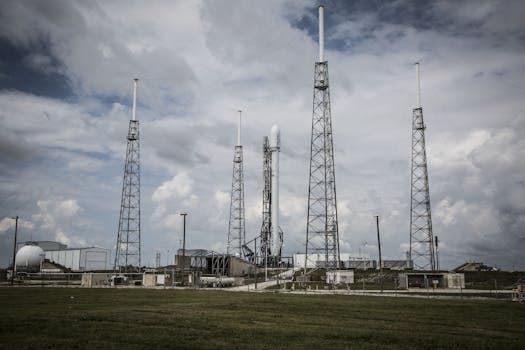Harnessing the Skies: New Technologies Transforming Satellite Communications
The satellite communications industry is undergoing a significant transformation with the advent of new technologies. This article explores the latest developments and innovations in satellite communications, including the use of advanced materials, artificial intelligence, and the Internet of Things.

Focus Keyword: Harnessing the Skies: New Technologies Transforming Satellite Communications
Harnessing the skies, new technologies transforming satellite communications, is revolutionizing the way we communicate and access information. The satellite communications industry is undergoing a significant transformation with the advent of new technologies. These advancements are enabling faster, more reliable, and more secure communication services, which are essential for various industries, including telecommunications, navigation, and weather forecasting.
The use of advanced materials, such as lightweight composites and high-temperature superconductors, is improving the performance and efficiency of satellites. Additionally, the integration of artificial intelligence (AI) and machine learning (ML) algorithms is enhancing the capabilities of satellite communications systems, enabling real-time data processing and analysis. The Internet of Things (IoT) is also playing a crucial role in the transformation of satellite communications, as it enables the connection of billions of devices and sensors, generating vast amounts of data that need to be transmitted and processed.
Advancements in Satellite Technology
Several advancements in satellite technology are driving the transformation of the satellite communications industry. One of the most significant developments is the use of high-throughput satellites (HTS), which offer faster data transfer rates and greater connectivity. HTS satellites use multiple spot beams to cover a wider area, increasing the overall capacity and reducing the cost per bit. This technology is particularly useful for applications that require high-bandwidth, such as video streaming and online gaming.
Another significant advancement is the development of low-Earth orbit (LEO) satellites, which operate at an altitude of around 2,000 kilometers. LEO satellites have several advantages over traditional geostationary satellites, including lower latency, higher bandwidth, and improved connectivity. They are also less expensive to launch and maintain, making them an attractive option for satellite communications providers.
Applications of Satellite Communications
Satellite communications have a wide range of applications across various industries. In the telecommunications sector, satellites are used to provide mobile network coverage, especially in remote and underserved areas. They are also used for backhaul connectivity, enabling the transmission of data between cell towers and the core network.
In the navigation sector, satellites are used to provide location-based services, such as GPS, GLONASS, and Galileo. These systems rely on a network of satellites orbiting the Earth, which transmit signals that can be received by GPS receivers on the ground. The signals are used to calculate the receiver’s location, velocity, and time.
In the weather forecasting sector, satellites are used to collect data on atmospheric conditions, such as temperature, humidity, and cloud cover. This data is used to predict weather patterns and issue warnings for severe weather events, such as hurricanes and typhoons.
Challenges and Opportunities
Despite the many advancements in satellite communications, there are still several challenges that need to be addressed. One of the main challenges is the issue of space debris, which poses a significant risk to operational satellites and the environment. Space debris includes old satellites, rocket parts, and other objects that are no longer in use and are orbiting the Earth.
Another challenge is the need for spectrum management, as the increasing demand for satellite communications is putting pressure on the available frequency bands. This requires careful planning and management to ensure that the limited spectrum is used efficiently and effectively.
However, the challenges also present opportunities for innovation and growth. The development of new technologies, such as satellite-based IoT and 5G networks, is expected to drive the demand for satellite communications in the coming years. Additionally, the increasing use of satellites for Earth observation and remote sensing is expected to create new opportunities for applications such as environmental monitoring and disaster response.



